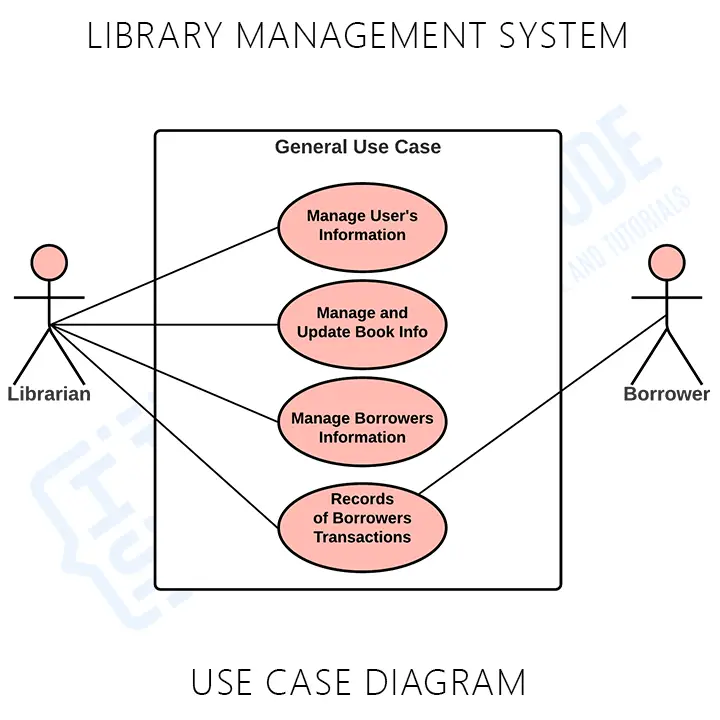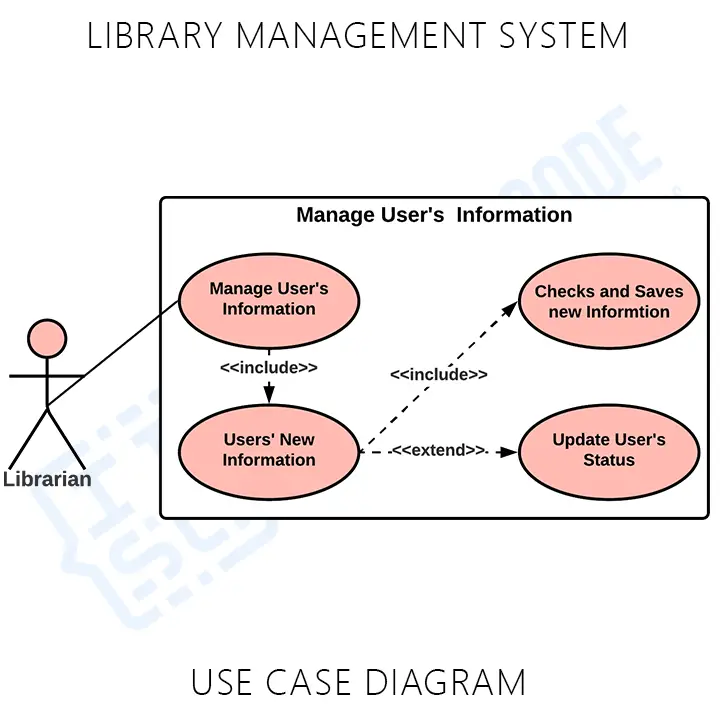A use case diagram for library management system in UML is considered a UML behavioral illustration. It shows the interactions and relationships between the user and the software. Therefore, describing a library management is much easier through a use case diagram.
Furthermore, the diagram uses defined symbols to describe the overall flow of the system.
Check out the related and suggested articles below to learn more about Diagrams and other topics.
- Activity Diagram for Library Management
- Component Diagram of Library Management System
- Deployment Diagram for Library Management System
- Library Management System Class Diagram
- Library Management System Sequence Diagram
What is a Use Case Diagram
The use case diagram not only shows the system’s behavior but also includes functions using use cases, actors, and their connections.
Its purpose is to help developers understand the system’s functions and user actions. This also includes procedures from the viewpoint of users.
Furthermore, the diagram serves as a system analysis that can identify, clarify, and organize the project’s needs. It works best with other UML diagrams, including activity, class, sequence, deployment, and component diagrams.
Users of Library System Project
- School Librarian: The school librarians will be the ones to use the system most of the time.
- Book Borrowers: Book borrowers were not just the students but also the professors or instructors. They will also have access to the system.
- School Admin: He/she can access all of the library’s information. This is done when there’s a serious scenario or problem.
Library Management System Use Case Diagram with Explanation
This simple use case diagram for library management system section clarifies the use case diagrams shown. The library management has different processes and they were discussed here one by one.
General Use Case Diagram for Library Management
This diagram is made up of the system’s main use cases and primary users. These use cases will be discussed in the following diagrams.
For example: draw use case diagram for library management system

Include and Extend in Use Case Diagram
Include and extend are indications used to describe the following library system use case diagrams. The label “include” implies that the use cases are required to complete the task, while “extend” declares otherwise.
User’s Information Management Use Case
This use case is focused on “Managing Users’ Information.” In the diagram, the use case is shown as a step that must come before user information management can be done.

Book Information Management Use Case
Book information management includes the sub-use cases that are part of completing the task.

This use case diagram presents the included processes for book information management. The processes with “include” are included in validating and recording book information. The “Update Book Status”, on the other hand, is only done when needed.
Borrower’s Information Management Use Case
Another presented use case diagram explains the included processes when managing and updating borrowers’ information.
The processes included are “Borrower’s New Information” and “Checks and Saves the New Information”. They are part of borrowers’ information management.

You can see that the next process is labeled “extend” because it is a conditional process. The sub-use case “Update Borrower’s Status” is only performed when needed. It invokes the must-be-done cases, such as the following use cases.
Conclusion
The UML use case diagram represents the methodology used in system development. It helps developers know the possible inputs that the project should process and perform.
Furthermore, the diagram is also applicable in modeling the software’s use cases (processes). It captures the system’s flow from one process to the next.
Inquiries
If you have concerns about the Library Use Case Diagram, leave us your comments below.

